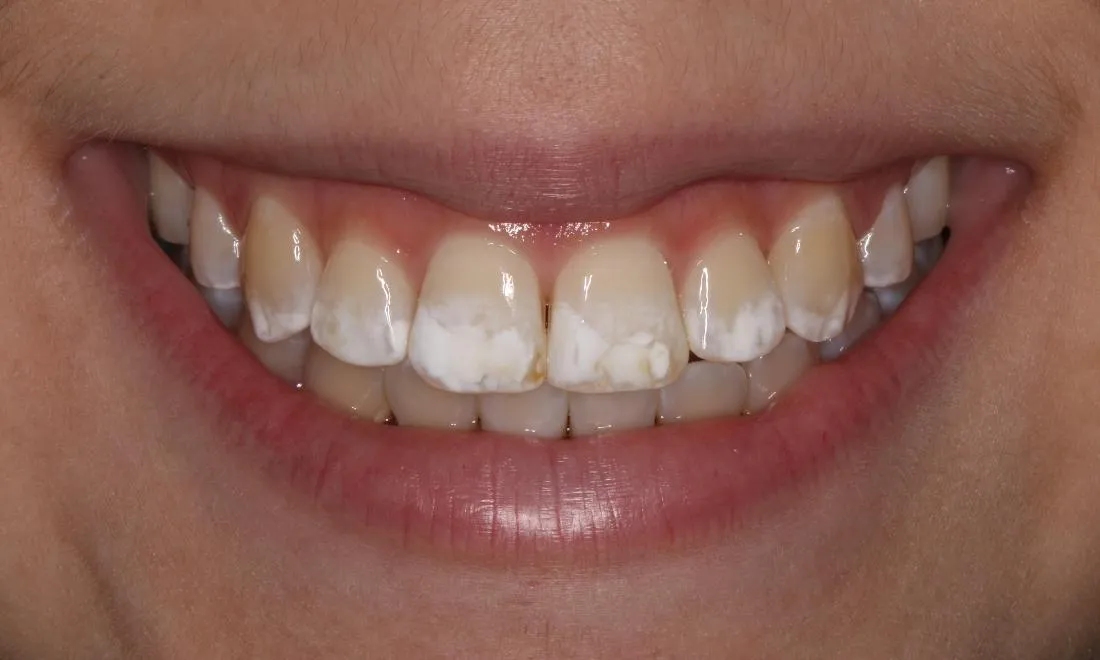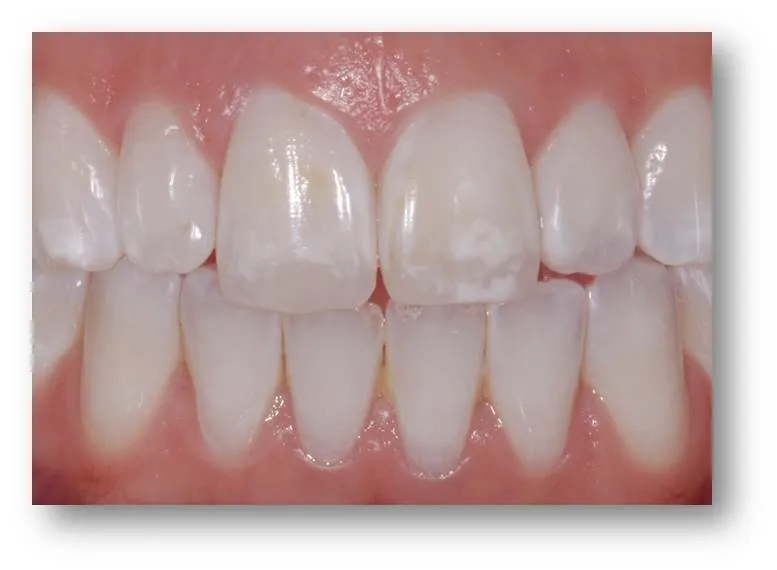What Are White Spots After Whitening?
Teeth whitening is a popular cosmetic procedure, but sometimes, it can lead to an unwelcome side effect white spots. These spots, also known as enamel decalcification, appear as small, opaque white patches on the surface of the teeth after the whitening process. While they are usually temporary, they can be a cosmetic concern for many individuals. Understanding the causes and potential treatments for these spots is crucial for anyone considering or having undergone teeth whitening. These white spots can vary in size and visibility, and their appearance often contrasts with the newly whitened surrounding enamel.
Causes of White Spots on Teeth After Whitening
Several factors can contribute to the formation of white spots after teeth whitening. These factors often relate to the health and condition of the tooth enamel before and during the whitening process. The interaction between the whitening agents and the tooth structure plays a significant role, and certain pre-existing conditions can make teeth more susceptible to these spots. It’s important to note that not everyone experiences white spots, and the likelihood can depend on individual oral health and the type of whitening treatment used. Understanding these causes can help in prevention and informed decision-making regarding teeth whitening.
Dehydration During Whitening Process

One of the primary causes is dehydration of the tooth enamel. During the whitening process, the bleaching agents can temporarily dehydrate the teeth, making them more porous. This dehydration can lead to white spots, as the enamel becomes less reflective and more absorbent of the whitening solution. The spots often appear more prominent immediately after whitening and may become less noticeable as the teeth rehydrate. Proper hydration is critical, both before and after the procedure, to minimize this effect. It is essential to follow your dentist’s advice regarding hydration to reduce the risk of white spots.
Uneven Enamel Density
Uneven enamel density can also contribute to the formation of white spots. Teeth with areas of thinner or less mineralized enamel may absorb the whitening agents differently, leading to uneven bleaching. These areas tend to appear whiter because they reflect light differently compared to the surrounding, more dense enamel. This variation in enamel density is often a pre-existing condition that becomes more apparent after whitening. Genetics and early childhood dental issues can influence enamel density, increasing the likelihood of white spots appearing after the teeth whitening procedure.
High Concentration of Whitening Agents
The concentration of the whitening agents used during the procedure is another critical factor. Higher concentrations of hydrogen peroxide or carbamide peroxide, the active ingredients in whitening products, can increase the risk of white spots. Stronger solutions can penetrate the enamel more aggressively, potentially causing uneven bleaching and increased enamel porosity. Professional whitening procedures often use higher concentrations, which is why it’s crucial to follow your dentist’s instructions and avoid over-the-counter products with extremely high concentrations without professional guidance. Always consult a dentist before undergoing any teeth whitening process to ensure it is suitable for your specific oral health condition.
How to Prevent White Spots on Teeth

Preventing white spots involves a combination of proactive measures and careful adherence to professional guidance. The key is to minimize the impact of whitening agents on the enamel and maintain optimal oral health before, during, and after the treatment. A well-informed approach, including proper preparation and aftercare, can significantly reduce the chances of developing white spots. This helps ensure that you achieve the desired results without compromising the health and appearance of your teeth. By taking these preventative steps, you can enjoy a brighter smile with minimal risk of unwanted side effects.
Consult Your Dentist Before Whitening
Before undergoing any teeth whitening procedure, consult your dentist. A dentist can assess your oral health, identify any pre-existing conditions like uneven enamel, and advise on the suitability of whitening. They can recommend the most appropriate whitening method and concentration of agents for your specific needs. They can also provide instructions on how to prepare for the procedure to minimize the risk of side effects such as white spots. Professional guidance ensures that the whitening process is safe and effective, tailored to your individual oral health profile.
Use Professional Whitening Procedures
Opting for professional whitening procedures performed by a dentist can reduce the risk of white spots. Dentists have the expertise to control the concentration of whitening agents and monitor the process closely, ensuring even application and minimizing potential damage to the enamel. Professional treatments often include pre-treatment preparations and post-treatment care designed to protect the enamel and enhance results. Professional-grade treatments are also more effective and produce more consistent results, providing you with the desired brighter smile safely and with minimal risks of adverse effects, such as white spots.
Follow Aftercare Instructions

Adhering to aftercare instructions provided by your dentist is critical. These instructions often include guidelines on what to eat and drink, avoiding staining foods and beverages, and using desensitizing toothpaste if needed. After whitening, your teeth may be more susceptible to staining and sensitivity. Proper care includes maintaining a good oral hygiene routine, including regular brushing and flossing. Following these guidelines can help your teeth rehydrate and reduce the prominence of any white spots that may have appeared. This helps maintain the longevity of your whitening results and the health of your teeth.
Treatments for White Spots After Whitening
If white spots appear after whitening, several treatments can help improve their appearance. These treatments range from simple home remedies to more advanced cosmetic procedures, depending on the severity and cause of the spots. The goal of these treatments is to restore the even appearance of the enamel and reduce the contrast between the white spots and the surrounding teeth. Consulting a dentist is essential to determine the most appropriate treatment option for your specific situation. With the right approach, these spots can often be effectively managed, restoring your smile’s natural beauty.
Remineralization Treatments
Remineralization treatments can help restore the mineral content of the enamel, reducing the appearance of white spots. These treatments typically involve the use of fluoride-based products, such as prescription-strength toothpaste, gels, or varnishes applied by your dentist. These products help strengthen the enamel and promote the reabsorption of minerals, making the white spots less noticeable. Remineralization is often the first line of treatment, particularly if the white spots are mild. Your dentist will provide you with a specific plan to address the white spots and restore the health and appearance of your teeth. The process can take several weeks, and consistency is key to success.
Microabrasion

Microabrasion is a cosmetic dental procedure that involves removing a thin layer of the enamel surface to reduce the appearance of white spots. The dentist uses a mild abrasive agent, such as pumice or fine-grit diamond burs, to gently polish away the superficial enamel. This process helps to blend the white spots with the surrounding tooth surface, creating a more even appearance. Microabrasion is most effective for superficial white spots. It is usually performed in a single appointment and can provide immediate improvements in the appearance of the teeth. The dentist will evaluate your teeth to determine if microabrasion is the right choice for you.
Cosmetic Dentistry Options
For more severe cases of white spots, cosmetic dentistry options like veneers or composite bonding may be considered. Veneers are thin, custom-made shells that are bonded to the front of the teeth, covering the white spots and providing a uniform appearance. Composite bonding involves applying a tooth-colored resin material to the teeth to fill in the white spots and create a more even surface. These treatments are more invasive but can provide long-lasting results. Your dentist will assess the severity of your white spots and recommend the most appropriate cosmetic dentistry solution based on your specific needs and desired outcome.
In conclusion, while white spots after teeth whitening can be a concern, they are often temporary or treatable. By understanding the causes, taking preventative measures, and seeking appropriate treatments, you can minimize their appearance and maintain a bright, healthy smile. Consulting with your dentist is crucial to determine the best approach for your individual needs and achieve the desired aesthetic results. With proper care and professional guidance, you can confidently enjoy the benefits of teeth whitening without compromising the health and beauty of your teeth.
